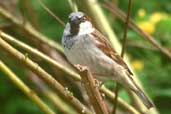
The House Sparrow is distributed around the world having spread from its original home in the Middle East. It reached the Pacific coast of Asia in 1929 but earlier, in 1850 it had been introduced to North America, in 1872 to Argentina and in 1906 to Rio de Janeiro. There is currently (2003) discussion as to how far it has colonised Central America - it seems to be widespread near human habitation in Costa Rica. See the distribution map at Birdlife International.
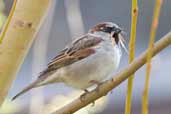
Upperparts are black streaks on brown. The male has a black bib and a grey crown with chestnut sides to the head. Cheeks are pale grey. The female (seen in photo 3) is much duller and is generally browny-grey below.
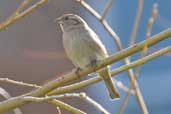
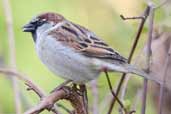
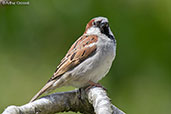
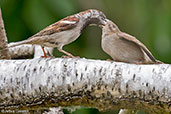
| Previous Page | Back to Index | Next Page |